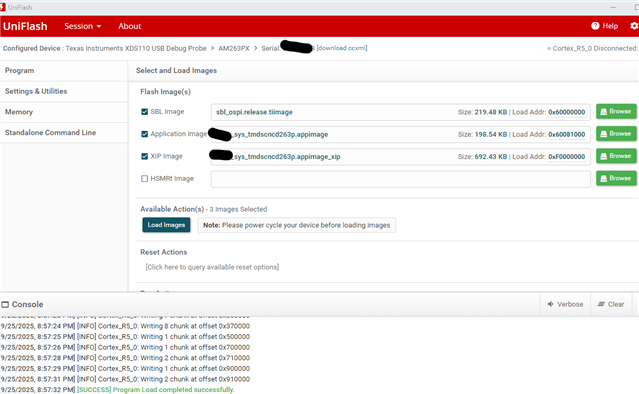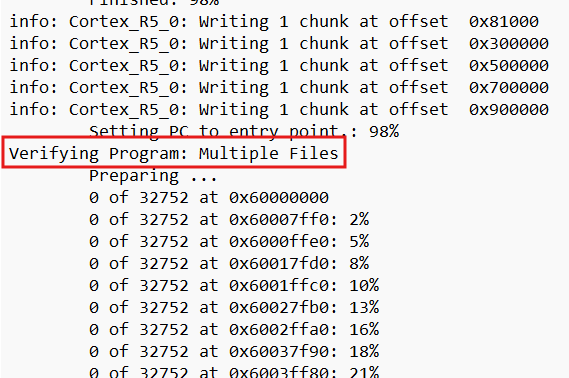Other Parts Discussed in Thread: TMDSCNCD263P
Tool/software:
Using Uniflash 9.2.0.5300 with TMDSCNCD263P Rev B, onboard XDS110 over JTAG with BOOTMODE=OSPI(8s).
When programming FLASH using Uniflash GUI, the console would say it all chunks are programmed and is complete.

But we have noticed that sometimes (hard to replicate) after successful loading and power cycling the board it stops part way during the boot. Almost as if the image was corrupt.
In one instance we programmed SBL, appimage and appimage_xip. On success and reboot, we can see the output stopped part way booting SBL.
The same images were loaded again with success. Another power cycle and the SBL booted and handed control to application where it crashed.
The same images were loaded again with success for a 3rd time. Another power cycle and now SBL and appimages booted up properly.
It was almost as each programming sequence programmed the images further.
I have 3 questions:
- Does Uniflash GUI do verification while it does programming?
- If so, how can we explain the behavior I saw?
- Is there a way or tool that can only verify images against what is programmed in flash?
- When using dslite from the standalone command line, the arguments seem conflicting. -s says no verification, but -v says verify after programming.
- -s VerifyAfterProgramLoad="No verification"
- -v
- It does seem to be doing verification though.


Thanks for the support.


